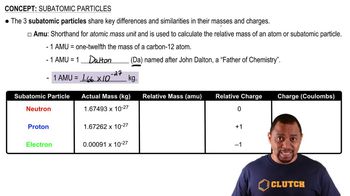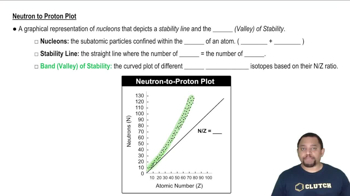Here are the essential concepts you must grasp in order to answer the question correctly.
Subatomic Particles
Subatomic particles are the fundamental constituents of atoms, which include protons, neutrons, and electrons. Protons and neutrons reside in the nucleus of an atom, while electrons orbit around the nucleus. Understanding these particles is essential for grasping atomic structure and the behavior of matter.
Recommended video:
Neutron
A neutron is a neutral subatomic particle found in the nucleus of an atom. It has no electric charge and a mass slightly greater than that of a proton. Neutrons play a crucial role in stabilizing the nucleus, as they help to offset the repulsive forces between positively charged protons.
Recommended video:
Symbol Representation
In chemistry and physics, symbols are used to represent elements and subatomic particles for clarity and brevity. The symbol for a neutron is 'n' or sometimes 'n0' to indicate its neutral charge. Understanding these symbols is important for interpreting chemical equations and nuclear reactions.
Recommended video:
 Verified step by step guidance
Verified step by step guidance

